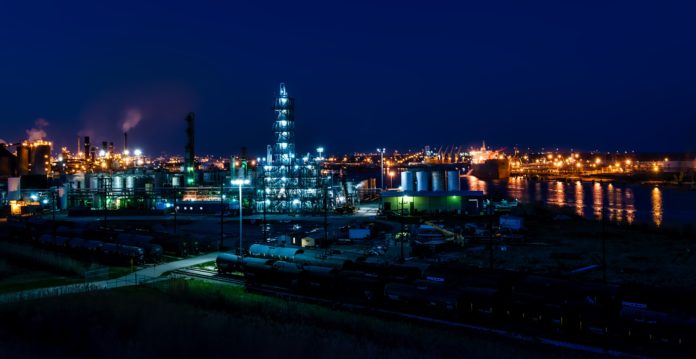Hydrocarbons are extremely important in today’s world and are used not only as fuels but also to create a large number of petrochemicals that we use on daily basis such as plastics, polymers, fabrics, cosmetics, and even medicine.
The oil and gas industry is divided into three main sectors: upstream, downstream, and midstream.
What Is Upstream Oil and Gas?
Upstream oil and gas deals with the exploration and production of hydrocarbons.
The exploration stage often involves studying geology and performing seismic surveys to determine the best locations to drill the well.
Based on the survey data geoscientists determine the potential of an underground hydrocarbon reservoir.
The wells can be drilled both onshore and offshore. Usually offshore projects are more complex and expensive.
Before the well can be drilled, in addition to clearing a location for a lease usually some type of infrastructure needs to be built.
On the new fields usually, a couple of exploration wells are drilled to determine the location of hydrocarbons and formation properties.
It is common to perform a lot of coring and logging on these test wells to get a better understanding of the reservoir.
After the location for the producing well is finalized, the well is drilled and the casing is installed.
Next, the casing is perforated, and usually, hydraulic fracturing is performed to increase production.
After fracturing the well, often coiled tubing is used to clean the wellbore and remove any obstructions such as bridge plugs that might obstruct the flow of hydrocarbons in the well.
The next step is putting well on production and installing all the required surface equipment and facilities.
Often, the 3-phase separator is used to separate well fluids into oil, gas, and water before hydrocarbons are transported to a refinery.
During the life of the well various enhanced recovery methods are used to increase production from the field.
Some of these methods are water flooding, gas, and chemical injection to increase reservoir pressure and mobility of hydrocarbons in the reservoir.
Oil and gas wells can stay active and produce hydrocarbons for many years.
At the end of their life wells are abandoned by placing a cement plug in the wellbore that prevents further flow of liquids to the surface.
The site where the well was drilled is reclaimed by removing the wellhead and any other surface equipment.
The goal of the reclamation process is to bring the land where the well was drilled to the same condition as it was before drilling. This might involve planting new vegetation.
Examples of upstream oil and gas companies are Chevron, BP, and ConocoPhillips.
Related: How Is Natural Gas Formed?
What Is Midstream Oil and Gas?
Midstream oil and gas deals with the transportation and storage of hydrocarbons.
After hydrocarbons are extracted, they need to be transported to a refining facility where they can be transformed into more useful products.
There are many ways to transport hydrocarbons such as by rails, tankers, trucks, and pipelines.
Using pipelines is the most effective way to transport hydrocarbons due to the low risk of spills and lower energy requirements than using trucks or rail.
However, the initial investment requirements to build a pipeline are very high.
In addition, there are many different regulations that can make the pipeline-building process extremely slow.
Since pipelines are crucial for the efficient delivery of hydrocarbons to the market, often lack of pipelines might result in a decrease in hydrocarbon pricing at the source due to larger transportation costs when transporting via trucks and rail.
If oil needs to be transported over the ocean, tankers are used.
Tankers can also be used for transporting Liquefied Natural Gas (LNG) but this requires compression and de-compression terminals.
There is a trend toward using natural gas as a fuel instead of coal and this will likely drive more demand for LNG.
Examples of midstream oil and gas companies are TC Energy, Enbridge, and Kinder Morgan.
Related: How is Crude Oil Transported?
What Is Downstream Oil and Gas?
Downstream oil and gas deals with the refining of crude oil.
Refining is performed by heating the crude oil to separate it into different hydrocarbons.
This is possible because different hydrocarbons have different boiling temperatures.
Another method is called cracking and it is used to break down larger hydrocarbon molecules into smaller more useful ones like for example gasoline.
Common petroleum products are gasoline, solvents, kerosene, and various other petrochemicals.
Large integrated oil and gas companies usually operate both in upstream and downstream sectors. Some examples are Suncor, Chevron, and Shell.
Read next: Why Are Gas Prices So High?
